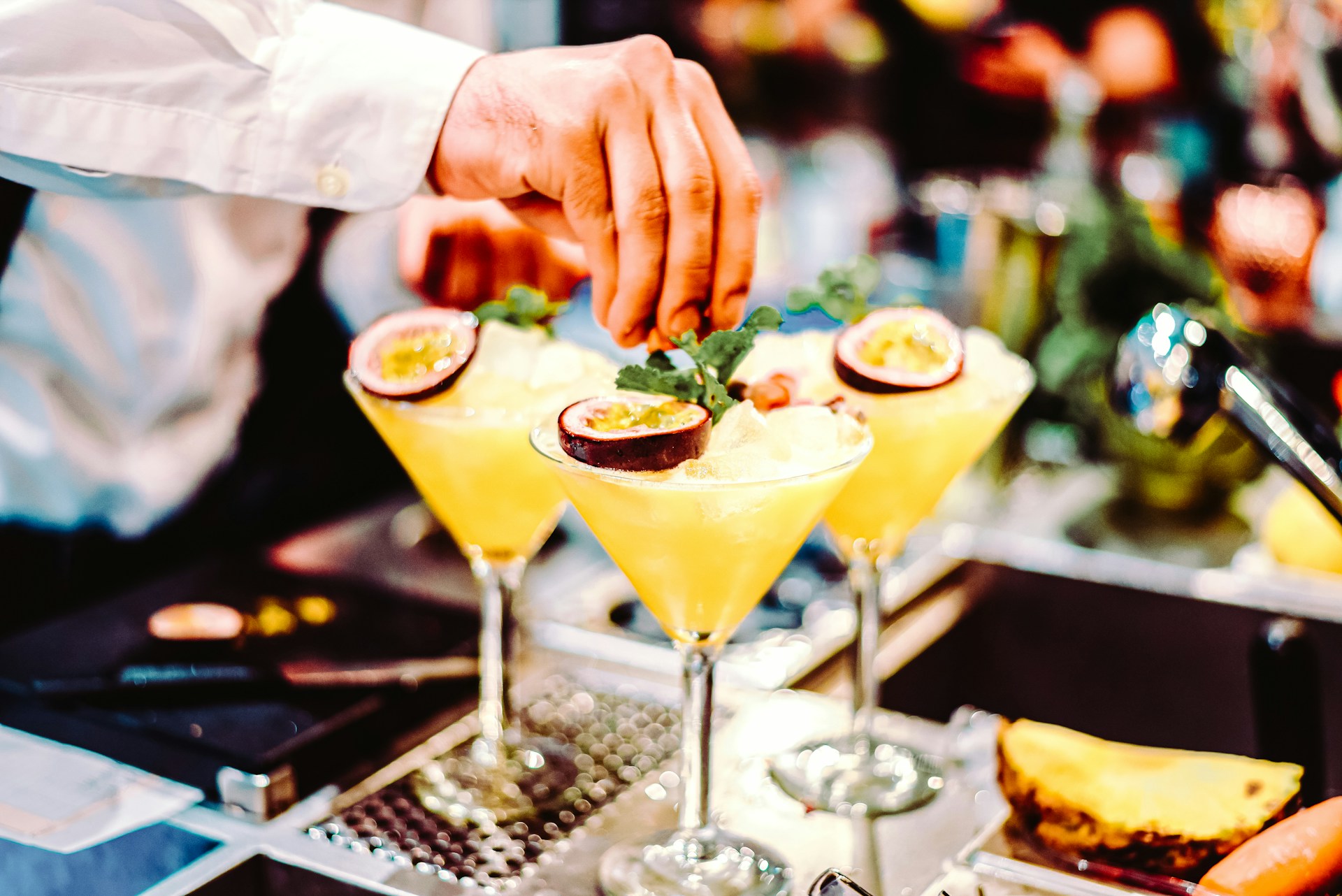
A carefully curated menu can elevate the dining experience at any event, creating a symphony of flavors that fully engages and satisfies guests’ palates. To achieve the perfect balance and harmony in your menu, it is essential to consider the intricacies of food and beverage pairings, focusing on complementary flavors that delight and impress your attendees. As experienced caterers and event planners, we pride ourselves on crafting captivating culinary experiences that showcase the art of food and beverage pairing, ensuring each bite and sip work symbiotically to create a memorable dining experience.
In this article, we will explore the foundational concepts and principles of food and beverage pairing, providing you with the knowledge and confidence to create harmonious flavor combinations for your event in Jacksonville, Ponte Vedra, St. Augustine, or Amelia Island. Whether you’re designing a formal sit-down dinner, a casual cocktail reception, or a themed culinary extravaganza, understanding the fundamentals of pairing will guide you in crafting a menu that highlights each dish’s individual tastes and textures while creating an unforgettable sensory experience for your guests.
Collaborate with our knowledgeable event planning and catering team to design an event menu infused with inspired flavor pairings that reflect your celebration’s theme, style, and preferences. Together, we will create a gastronomic journey that leaves a lasting impression on your guests, elevating your event to new culinary heights.
Food and Beverage Pairing Fundamentals: Enhancing Your Event Menu with Complementary Flavors
Achieving the perfect balance of flavors within your event menu can elevate the dining experience for your guests. This can be accomplished through strategic food and beverage pairings, which enhance every bite and sip. In this article, we will delve into the foundational principles of food and beverage pairing to provide you with the knowledge needed to create harmonious combinations that impress and delight your attendees.
1. Understand the Basic Principles of Food and Beverage Pairing
The foundation of successful food and beverage pairing is understanding the basic principles and relationships between different flavors and textures. By grasping these concepts, you can create cohesive and complementary combinations that enhance your menu.
A. Balance Flavors and Intensity: Pair dishes and beverages with similar flavor intensities to avoid one overpowering the other. For example, a robust, full-bodied wine would best complement a rich, hearty entrée.
B. Contrast and Complement: Experiment with contrasting or complementary flavors to emphasize the unique characteristics of each dish and beverage. Pair a spicy dish with a crisp, refreshing beverage or a rich, savory entrée with a bright, acidic wine.
C. Consider Textures: Balance textures by considering the weight and mouthfeel of both the dish and the beverage. A creamy, smooth dish may benefit from a light, effervescent drink, while a complex, layered dish might pair well with a full-bodied, velvety wine.
2. Wine Pairings: Classic Combinations and Innovative Ideas
Wine is often the go-to pairing choice for many event menus. Understanding the fundamental relationships between various wines and different types of dishes will help you create natural and harmonious pairings.
A. Classic Pairings: Certain wine and food combinations have stood the test of time due to their natural affinity for each other. Lean proteins, like chicken or fish, pair well with lighter wines, such as Sauvignon Blanc or Pinot Grigio. Full-flavored red meats, like beef or lamb, make a great match with bold, red wines like Cabernet Sauvignon or Shiraz.
B. Alternative Varietals: Explore lesser-known wine varieties to offer unique and innovative pairings that can surprise and delight your guests. Consider an aromatic Viognier to pair with spicy dishes or a bright and fruity Grenache with pork or poultry.
3. Beer and Cocktail Pairings: Creating Engaging Flavor Combinations
Expanding beyond wine, beer, and cocktails offers a wealth of opportunities for inventive and exciting food pairings that enliven your event menu.
A. Beer Pairings: The diverse world of craft beer offers a plethora of pairing possibilities. Consider pairing hoppy IPAs with spicy dishes, rich porters with desserts and chocolate, or crisp pilsners with seafood and lighter fare.
B. Cocktail Pairings: Craft a selection of cocktails designed to enhance the flavors of your dishes. For example, a citrusy cocktail can add a bright, acidic element to a rich, creamy entrée, or a smoky, savory cocktail can add depth to a sweet, fruity dish.
4. Customizing Pairings for Your Event Theme and Guests
When selecting food and beverage pairings for your event, consider the unique preferences and needs of your guests, as well as your overall event theme. This will ensure a catered experience that is both cohesive and personalized.
A. Dietary Restrictions and Preferences: Be mindful of any dietary restrictions or preferences your guests may have and select pairings that accommodate these needs. This could include offering alcohol-free pairing options, gluten-free beer choices, or vegan wine selections.
B. Event Theme and Style: Align your food and beverage pairings with your event’s theme and style. For example, a beachside soirée might call for light, refreshing pairings, while an elegant cocktail reception may require sophisticated and indulgent combinations.
Conclusion
Mastering the fundamentals of food and beverage pairing empowers you to create an event menu that is harmoniously balanced and packed with dynamic flavor combinations. By understanding the basic principles of pairing, experimenting with classic and innovative wine, beer, and cocktail options, and customizing your selections to suit your guests and event theme, you can elevate the dining experience for your attendees and craft a memorable culinary journey.
Bring your event menu to life with the assistance of our event catering professionals in Jacksonville, Ponte Vedra, St. Augustine, and Amelia Island. Contact Mai Oui Catering and Event Planning today to discuss your ideas and learn how our passion for culinary innovation, excellence, and expert execution can help you create a tantalizingly balanced and flavorful event menu that leaves your guests raving for more.
